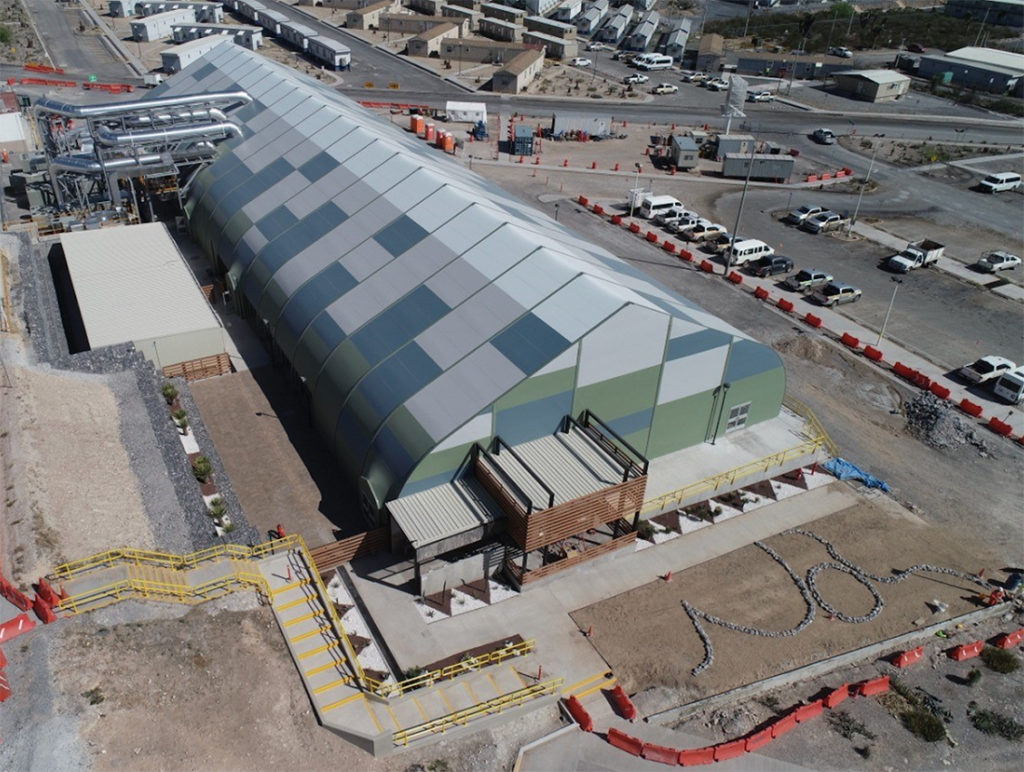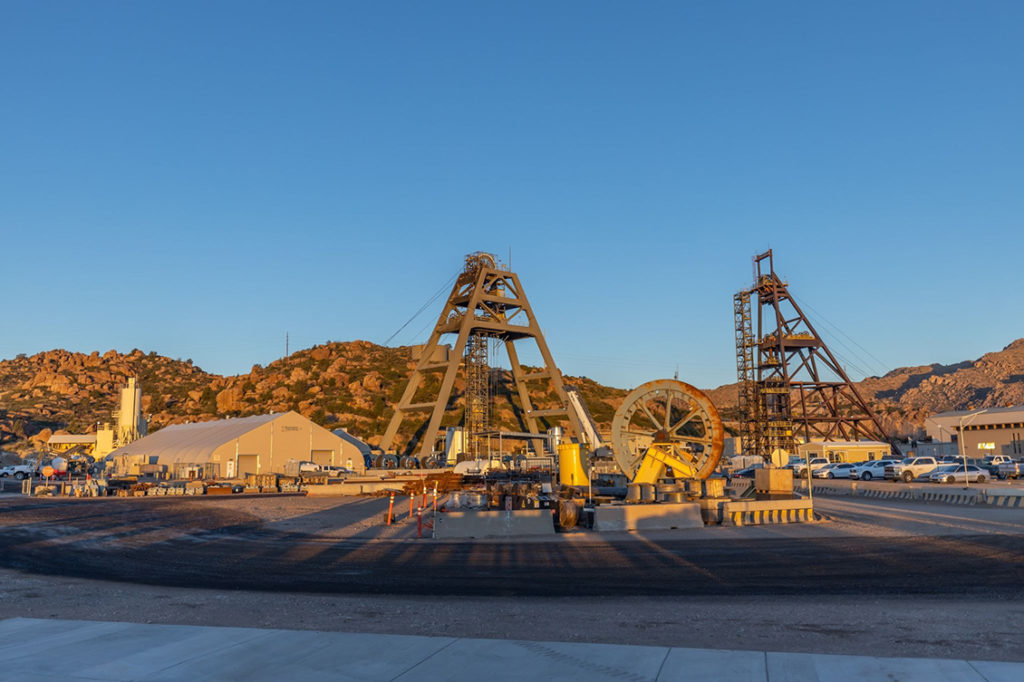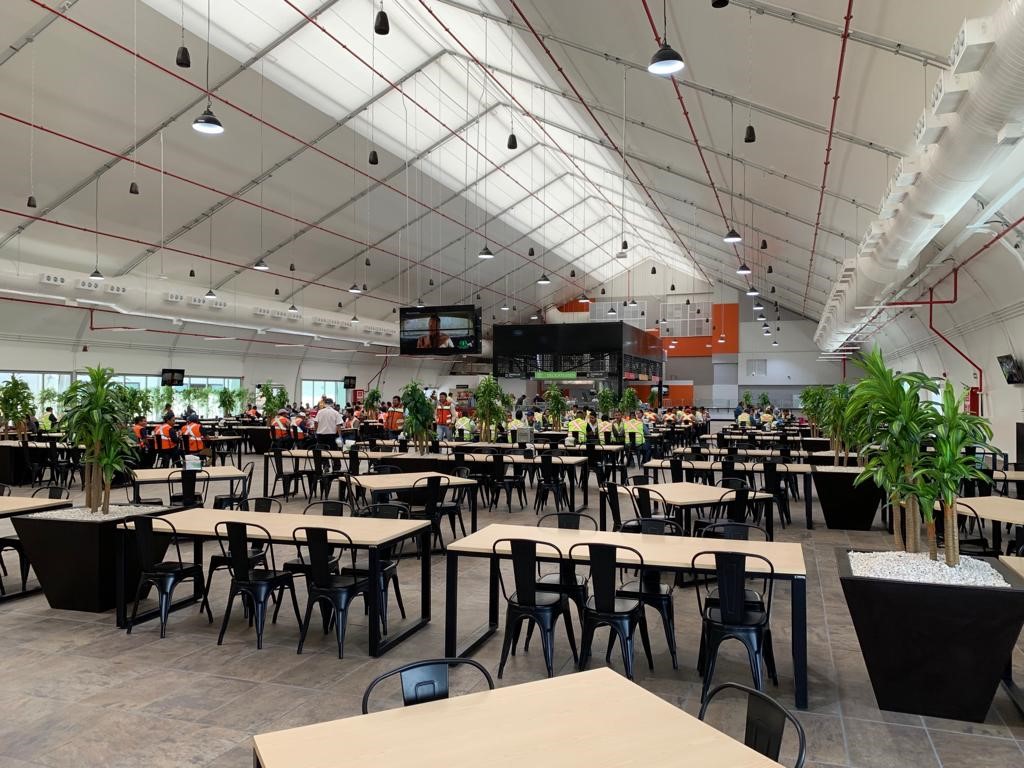JV Article: Sprung Structures: High performance tension fabric alternatives to steel buildings for mining operations

Sprung Structures was founded in 1887 and evolved into a major manufacturer of high-performance tension fabric buildings for multiple industries. The company developed and patented the stressed membrane structure, an innovative alternative to conventional construction utilizing architectural membrane panels placed under high tension within a non-corroding aluminum substructure.
This technology is a result of today’s mining operations’ need for a faster, more flexible and cost-effective building solution. With recent supply chain challenges affecting the market, Sprung structures can be shipped and erected much faster than typical steel buildings.
The company’s nine inch fibreglass blanket insulation performs well in extreme cold weather climates and large cargo doors are designed to shed snow and handle hurricane force wind loads in the world’s most remote locations. The only building structure left standing in Buras, Louisiana after Hurricane Katrina in 2005 was a Sprung structure.
Today, Sprung counts the world’s largest miners, as well as NASA, Lockheed Martin, the US Army Corps of Engineers, Apple, Tesla, FedEx and Google among its roster of clients, and the company built Tesla’s Model 3 production facility in California in just a few weeks.
“We're really the only permanent type of fabric structures on the market,” says Vice President Jim Avery. “We pioneered this whole technology – we manufacture, and ship what can be put up in just about any location.”
Avery adds that a concrete foundation is not required, and Sprung Structures can be assembled on dirt and asphalt. Sprung has completed over 12,000 projects in over 100 countries, and its structures meet most building codes and standards around the world. Sprung’s military-grade aluminum alloy has advantages over steel construction, such as corrosion resistance, lighter weight, better performance, malleability, and durability.
“Initially, this technology was a temporary application, but these are engineered as permanent structures and designed to be relocated for multi-use applications with bolted connections that can be disassembled, reconfigured, and relocated,” Avery says.
“We're very entrepreneurial, and we're the inventor of the product. We've done a lot of work in the mining industry and [have] versatility in the product. It's not like conventional bricks and mortar or steel building, it goes up much faster, which is essential when it comes to mining,” Avery says.

Sprung also leases its structures, dependent on one-to-three-year applications with an option to purchase in mines all over the world.
“We've only used our product from a fabric building perspective, because it does handle the extreme wind and snow loads,” Avery says. “We use aluminum, not steel, and our tensioning method is patented, which means you never have retention in the membrane in the life of the building.”
Sprung Structures has up to two million square feet of inventory in both its Utah, US and Calgary, Canada, manufacturing and distribution centers. The minimal foundation requirements in some cases contribute to overall cost effectiveness as operating costs are lower than traditional buildings.
Sprung Structures’ business development manager Pablo Noriega points out the company also specializes in state-of-the-art dining facility structures that are a vital hub for the workforce in a mining camp environment.
Fourteen applications include dining facilities, warehouses, distribution centers, truck shops, there are many uses, in expandable modular sections. “That's the other great attribute to the product – you can add to it,” Noriega says.

“We have many [structures] on mine sites in very extreme locations from the coast of Chile to the peak of the Andes 4,300 meters above sea,” Noriega adds. “When we have to ship around the world, even the most extreme location is going to have the structure in a few containers, and everything is well organized.”
“The moment when we arrive on site with the containers, and in every single structure, we provide you with our technical consultant, our membrane guarantee is up to 25 years on the membrane and 50 years on the aluminum substructure.”
The preceding Joint Venture Article is PROMOTED CONTENT sponsored by Sprung Structures and produced in co-operation with MINING.COM. Visit www.sprung.com for more information.
Comments
Llewellyn Jenner
Do you have an Agent for your buildings in Southern Africa
Thanks
Llewellyn Jenner
CEO at SYNNTECH
+27794924433
https://www.linkedin.com/in/llewellyn-jenner-320b1111/